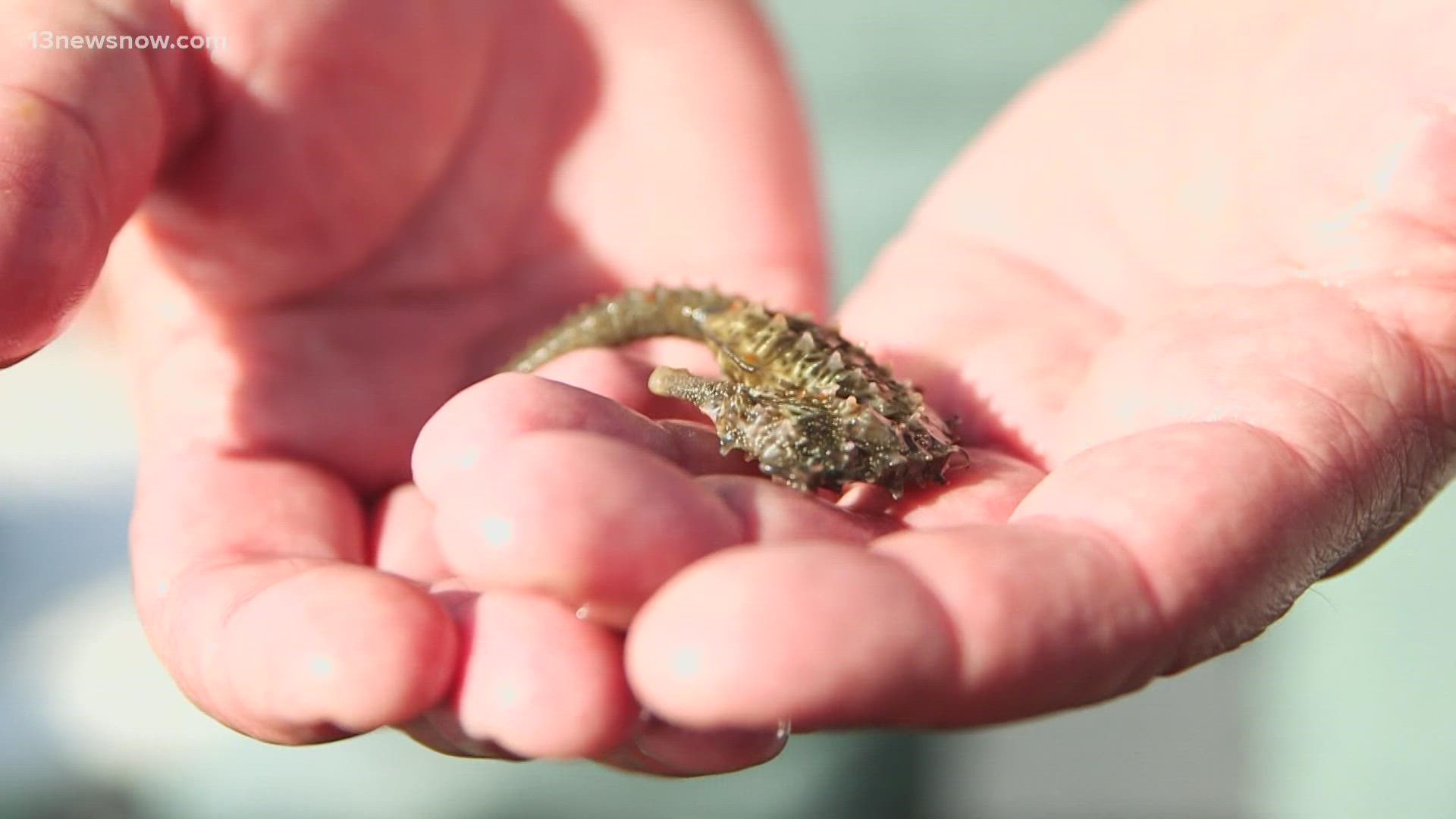NORFOLK, Va. — You never know what you’ll find when you head out for a day on the boat. But if you’re like Joe Rieger, maybe you can find a little luck of your own.
On a September morning, Rieger and other environmental volunteers conducted the latest iteration of a trawl survey to measure the biodiversity of the Elizabeth and Lafayette rivers.
Maybe it was the luck of having 13News Now aboard, but they came across a species of aquatic life you might not normally associate with urban rivers.
"Just to know off the busy streets of Norfolk, you’re finding these creatures you see on television," Rieger said. “We’ve been conducting that trawl survey for 12 to 13 years, and we started picking up seahorses five years ago."
In the last six years, the crew has had 13 seahorse sightings since then, which is only counting the ones they've personally observed.
The sightings aren’t exactly random, either.
"What’s happening is we’re seeing an improvement of water quality in the river. We’ve added more habitat that’s conducive to live around. Those reefs that had that red beard sponge allows them to thrive. It's a combination of water quality and habitat, which allowed a higher abundance of seahorses to move into these waters. We’ve had seahorses, but these numbers appear to be going up at least in this trawl survey," Rieger said.
The increasing number of seahorses could offer a sign of how the tide is turning.
"They’re animals that can’t exactly move away from polluted waters, they’ll establish a population in the most sustainable areas," Melanie Flanigan said. She oversees seahorses at the Virginia Aquarium.
It's an indicator of a large idea that the years-long efforts to clean and prevent pollution across the Elizabeth and Lafayette rivers are working.
"It's not just about staying there but also breeding, so they’re having babies. They’re small, delicate, and have a high mortality rate. Having them stick around and grow up is a high indicator," Flanigan said.
So now you know: seahorses are hidden in plain sight in the local watershed. You might still need a little luck on your side to find one with your own eyes.
"You have this mystical type creature like a seahorse that lives in your backyard," Rieger said.
According to the survey results, seahorses have been spotted and observed near urban areas like the Nauticus Museum and the Campostella Bridge.

